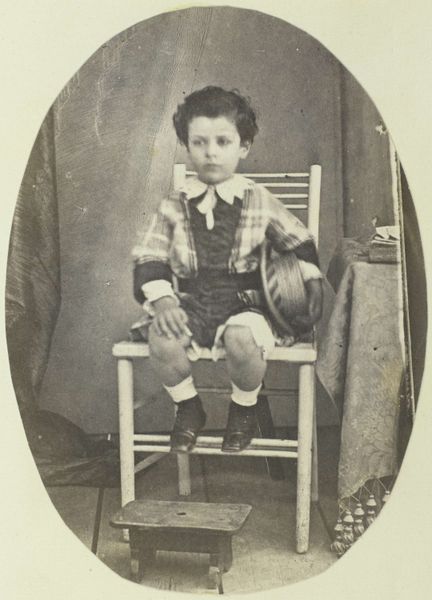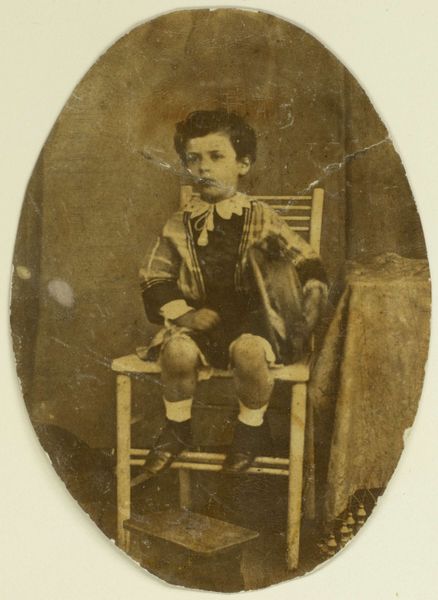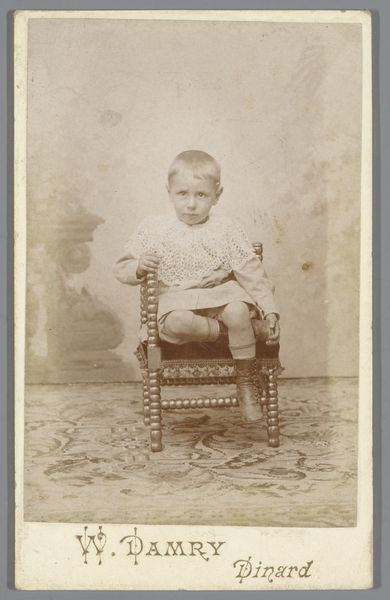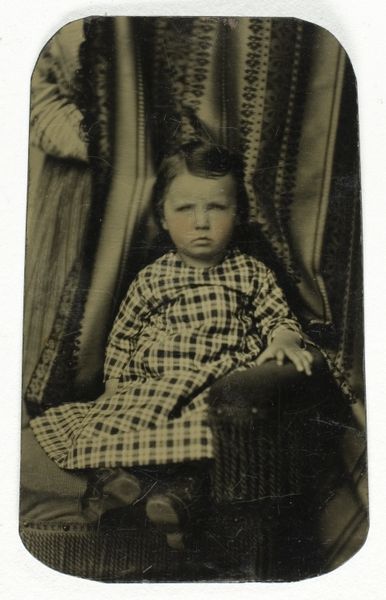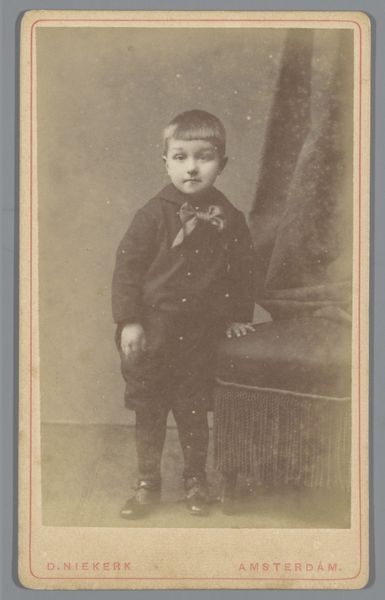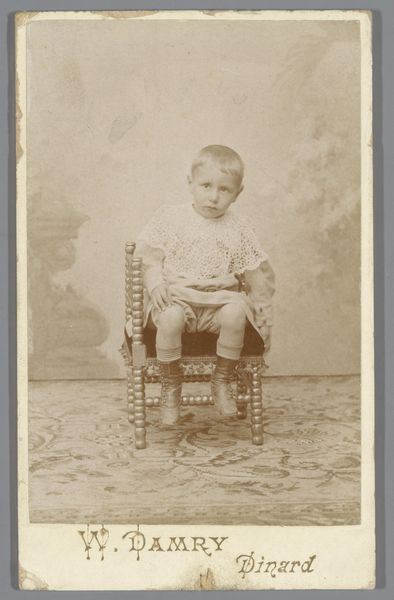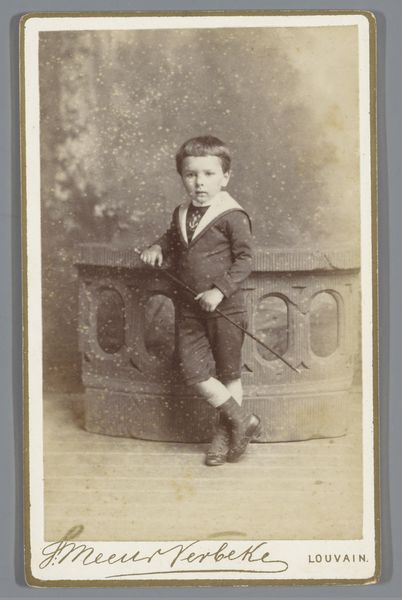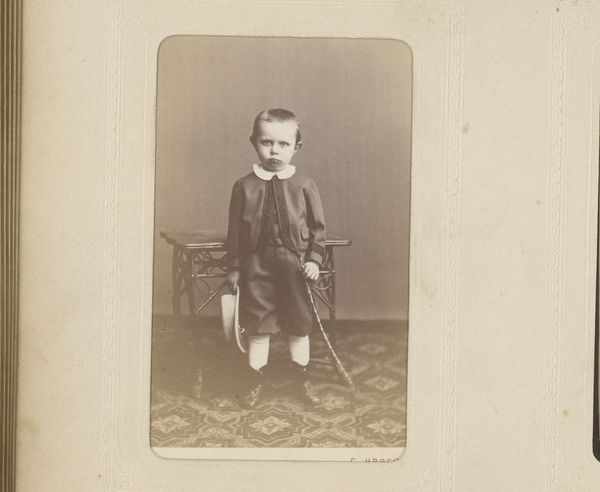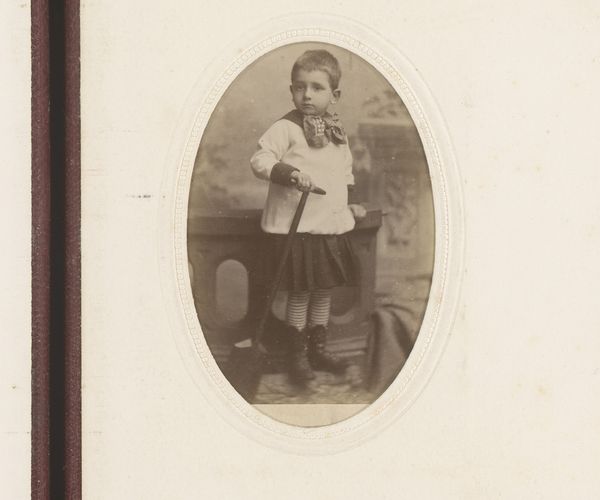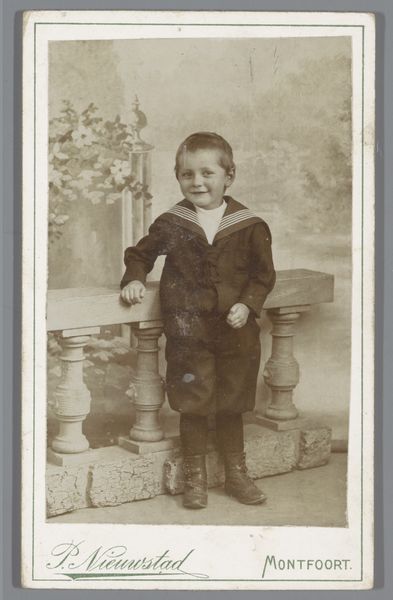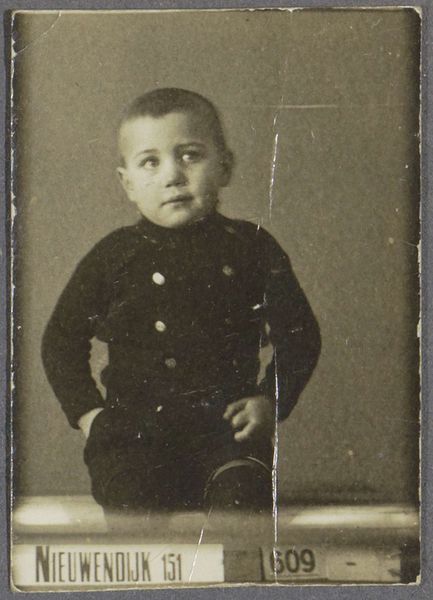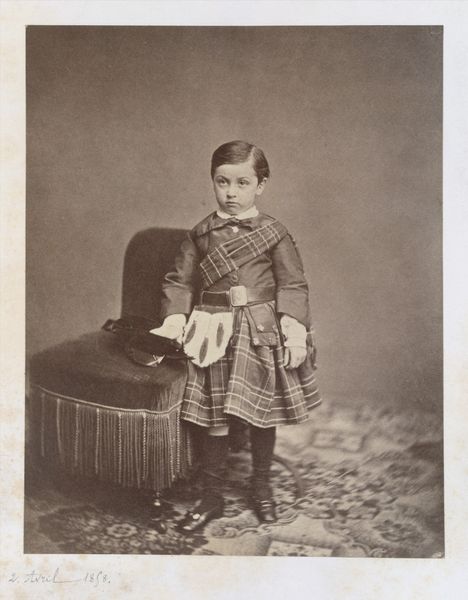
daguerreotype, photography
#
portrait
#
daguerreotype
#
photography
#
realism
Dimensions: height 138 mm, width 103 mm
Copyright: Rijks Museum: Open Domain
Curator: Let’s turn our attention to a fascinating daguerreotype, dating to about 1854. It’s titled "Portret van Lodewijk Asser" and currently resides in the Rijksmuseum collection. Editor: My immediate impression is one of formality tinged with vulnerability. The boy's expression is serious, almost stern, but the fragility inherent in the photographic process and the soft, diffused light convey a sense of innocence lost to time. Curator: Precisely. A daguerreotype is a direct positive image, created on a silvered copper plate. Each one is unique and, considering the time, must have involved careful preparation, specialized knowledge and expense in materials, implying a desire for posterity. We must also consider the sitter, young Lodewijk, must have remained perfectly still for quite some time! Editor: The little details become so evocative: the lace collar, the somewhat too-large patterned jacket… It's as though the garments themselves are symbols of an inherited social identity, the constraints and expectations placed upon this child by his family and society. Look at the table drapery and its ornamental tassels. Curator: It really speaks volumes, doesn't it? Early photography was revolutionary. The materiality and chemistry needed for its processes represent the shift in manufacturing and knowledge sharing. This isn't simply a picture; it's an object made using advanced chemistry, a social statement and a preserved moment in history. Editor: Absolutely, the image serves as a cultural mirror, reflecting societal values of the 19th century and acting as a memory, preserved. The boy becomes a representation of childhood, privilege, and perhaps even the weight of expectation in that era. Curator: I’ve really appreciated seeing your emphasis on the context in which an everyday material such as photography emerged, as it underscores how images encapsulate so much material information alongside artistic composition. Editor: Thank you. Analyzing the symbolic language offers us an opening into history. We must remember images serve both roles simultaneously to be fully understood!
Comments
No comments
Be the first to comment and join the conversation on the ultimate creative platform.
